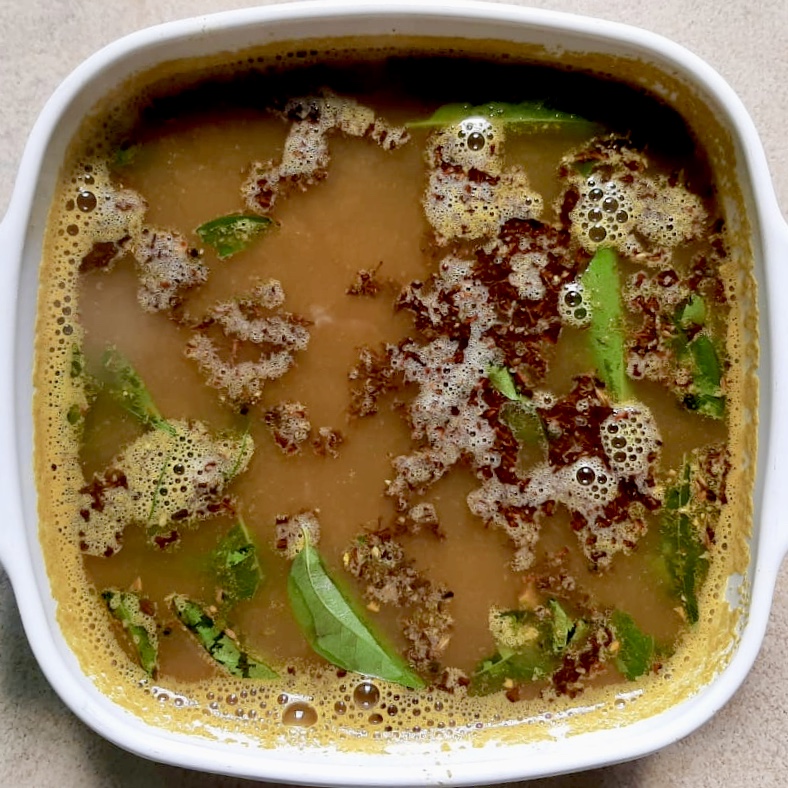
Healthy Rasam
Rasam is a South Indian staple commonly eaten with rice and an accompaniment of curry. It can also be enjoyed as a soup starter. Rasam is usually made with a tamarind, lentil and tomato base but there are over a hundred variations that you can try! This recipe is a healthy version of traditional rasam bursting with flavour and chock full of nutrients.
Ingredients
Moong dhal – 2 tablespoons (*Note 1)
Garlic – 2 pods
Fenugreek seeds – 1 teaspoon
Coriander seeds – 1 teaspoon
Whole black pepper – 1 tablespoon
Dry red chilly – 1 or 2 (or to taste)
Cumin seeds – 1 ½ teaspoons
Coconut grated – 1 tablespoon
Curry leaves – 1 handful
Ginger – 5 cm piece (cut into small pieces)
Ghee – 2 tablespoons
Dry neem flowers – 1 tablespoon (*Note 2)
Tamarind – 1 small lemon sized ball (*Note 3)
Jaggery – 1 tablespoon (*Note 4)
Black mustard seeds – 1 teaspoon
Turmeric powder – 1 teaspoon
Salt – 1 teaspoon (or to taste)
Asafoetida – ½ teaspoon
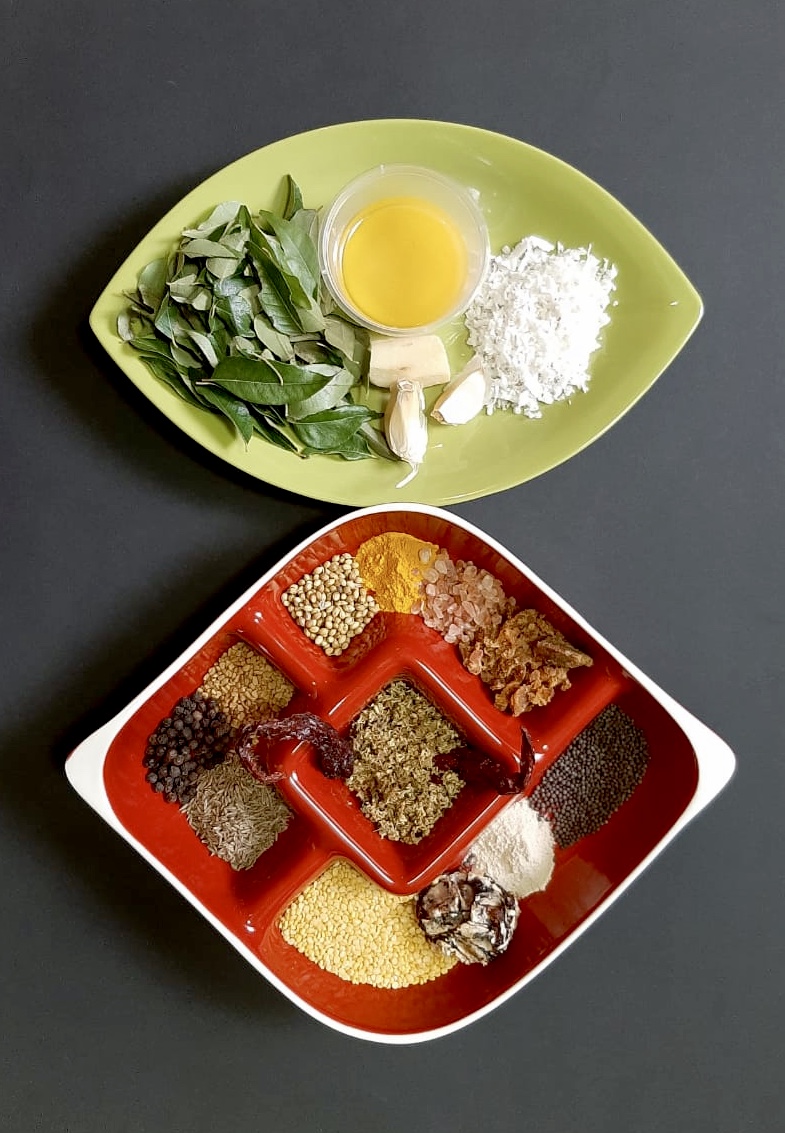
Yield
~ 1 L
(serving size 200-250 ml)
Prep time
1/2 hr
(to soak dhal)
Cook time
1/2 hr
Method
1) Dry roast fenugreek seeds. Set aside and let cool.
(Fenugreek should be roasted separately on low heat for nearly 5 minutes to bring out the right flavour and suppress the bitterness. If it is fried with other ingredients, it may burn because of its small size. The picture shows you the right colour.)
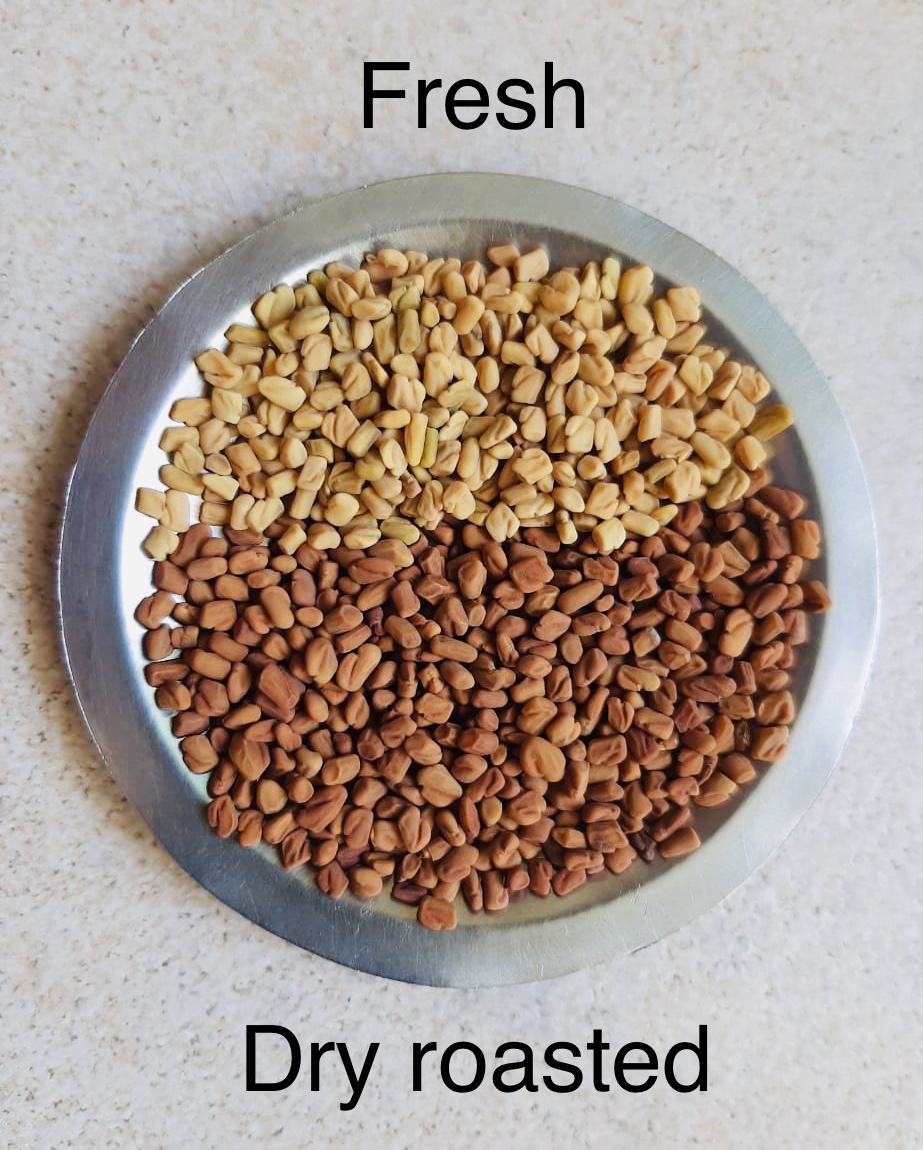
2) Dry roast coriander seeds, black pepper and red chilly on low flame for 2 mins. Set aside and let cool.
3) Sauté curry leaves and ginger in a tablespoon of ghee. Set aside and let cool.
4) Grind all the above ingredients along with a teaspoon of cumin seeds and the coconut into a coarse powder.
5) Boil moong dhal and garlic together. Mash well and set aside.
6) Fry the neem flowers in ghee on a low flame until it turns dark brown and becomes crisp. Take your time to do this to avoid charring. The picture should help you determine how long you should fry the neem flowers.
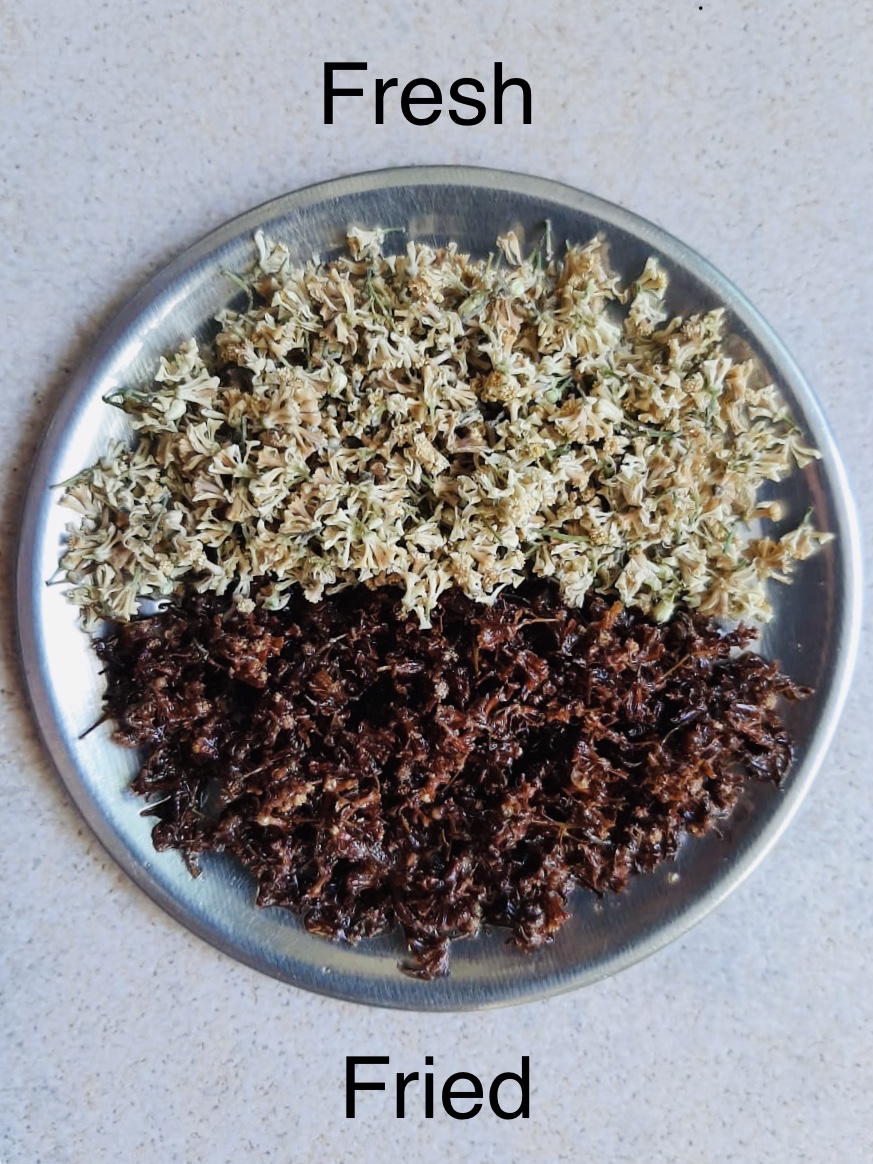
7) In a vessel, take 200 ml of tamarind water (soak a small lemon sized tamarind in 200 ml hot water for 15 minutes. Squeeze out and extract the juice.)
8) Add turmeric powder, salt, jaggery and asafoetida. Let it boil for 10 minutes on low to medium flame (or until the raw smell of the tamarind goes away).
9) Now add the powdered ingredients. Let it boil for 2 to 3 minutes.
10) Now add the boiled dhal, 500 ml of water and the fried neem flowers to the rasam. Simmer (about 5 mins).
11) Switch off the stove.
12) Separately, in a small pan, heat a tablespoon of ghee. When it is hot enough, add the black mustard seeds and when it starts to splutter add a teaspoon of cumin seeds. Now add a few curry leaves to this and add the whole mixture to the rasam. Mix and cover. Rest it for 10 minutes.
13) Serve hot either with rice or as a soup.
Notes
- Soak the dhal in 150 ml of water for half an hour, if possible, before boiling it to reduce cooking time.
- The medicinal properties of Neem are widely known and it has been the subject of many research initiatives. Fresh flowers are carefully collected when the tree is in peak bloom, cleaned and air dried. This way it can be stored for the whole year and used.
- Tamarind can be substituted with 2 tablespoons of lemon juice or 1 large tomato. If you go with lemon juice, then, just take plain water in step 7 and add lemon juice after adding the dhal to the rasam in the final stage. If you are using tomato, then, cut it into small pieces and add to plain water in step 7.
- Jaggery can be substituted with the same amount of raw brown sugar.


You May Also Like
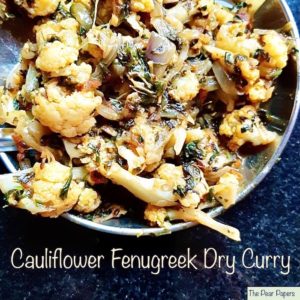
Cauliflower Fenugreek Dry Curry
November 21, 2021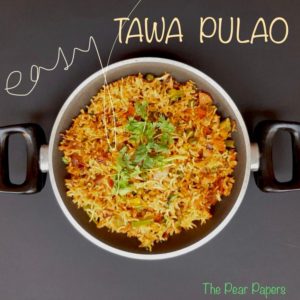
Easy Tawa Pulao
May 14, 2020